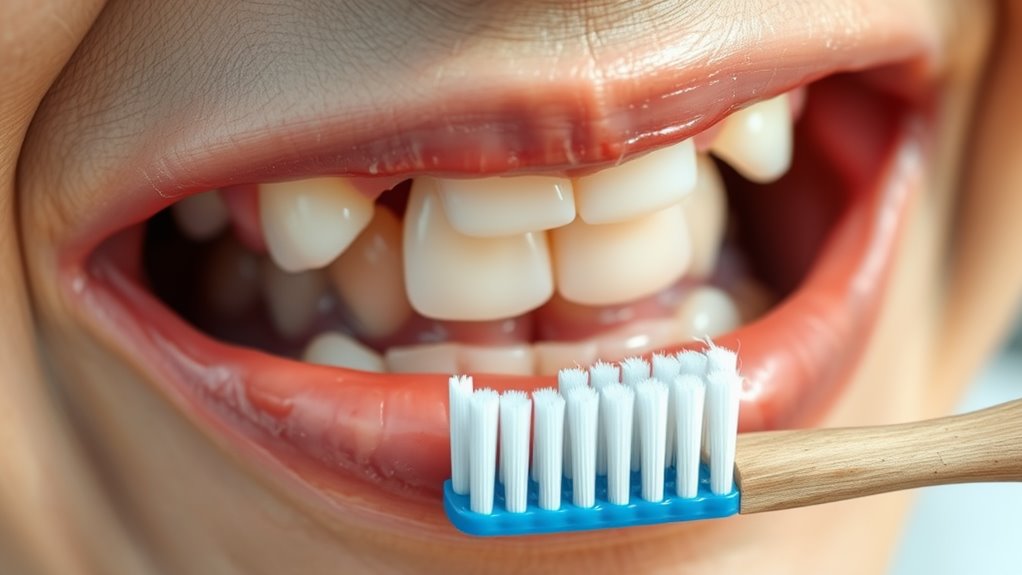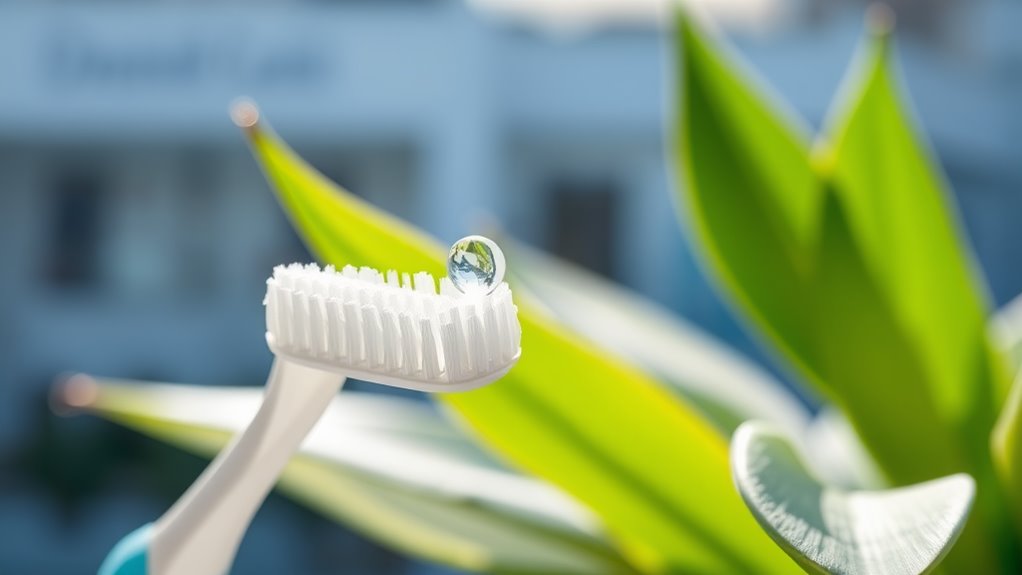Reverse Gum Disease Naturally – No Dentist Needed!
You can reverse early-stage gum disease naturally by following a consistent daily oral care routine and using proven home remedies. Start with gentle brushing twice daily, salt water rinses, and natural antimicrobials like tea tree oil and aloe vera. Add vitamin C-rich foods and omega-3s to your diet while reducing sugary drinks. Track your progress with photos and symptom logs. The key to healing your gums lies in understanding the right techniques and natural solutions.
Understanding the Signs and Stages of Gum Disease
While many people brush off early gum problems as temporary discomfort, recognizing the signs of gum disease is crucial for preventing its progression. The earliest stage, gingivitis, shows up as red, swollen gums that bleed easily when you brush or floss.
If left untreated, it advances to periodontitis, where your gums start pulling away from your teeth, forming pockets that collect bacteria.
You’ll notice several warning signs as the condition worsens: persistent bad breath, tender or painful gums, loose teeth, and receding gum lines.
The most severe stage involves bone loss and tissue deterioration, which can lead to tooth loss. If you’re experiencing any of these symptoms, especially bleeding gums or increasing sensitivity, it’s time to take action before the damage becomes irreversible.
Natural Ingredients That Fight Gum Inflammation
When it comes to fighting gum inflammation naturally, several powerful ingredients have proven their worth through both traditional use and scientific research.
Tea tree oil’s antimicrobial properties help eliminate harmful bacteria, while aloe vera reduces inflammation and promotes healing.
You’ll find that clove oil provides natural pain relief and fights infection, making it an excellent choice for sore gums.
Salt water remains one of the simplest yet most effective remedies, as it creates an inhospitable environment for bacteria while reducing swelling.
Turmeric’s active compound, curcumin, works as a powerful anti-inflammatory agent, and neem’s antibacterial qualities have made it a staple in traditional medicine.
Vitamin C-rich ingredients like lemon and orange peel help strengthen gum tissue and boost your immune system’s ability to fight infection.
Daily Oral Care Routine for Healing Gums
To effectively heal your gums, establishing a consistent daily oral care routine remains crucial for long-term success.
Start by brushing twice daily with a soft-bristled toothbrush, using gentle circular motions at a 45-degree angle to your gumline. Between meals, rinse your mouth with salt water or a natural antibacterial mouthwash.
You’ll need to floss at least once daily, using the C-shaped technique to wrap the floss around each tooth.
Consider adding oil pulling with coconut oil for 15 minutes each morning before brushing. Massage your gums daily with your clean fingertip to stimulate blood flow.
End your nighttime routine by using a water flosser to remove any remaining debris and bacteria from hard-to-reach areas between your teeth.
Essential Diet Changes for Gum Health
Making strategic dietary changes can dramatically improve your gum health and support natural healing.
You’ll want to focus on nutrients that fight inflammation and strengthen oral tissues, while avoiding foods that promote bacterial growth and gum damage.
-
Load up on vitamin C-rich foods like strawberries, bell peppers, and citrus fruits to boost collagen production and strengthen blood vessels in your gums.
-
Include omega-3 fatty acids from salmon, sardines, and chia seeds to reduce inflammation and support gum tissue repair.
-
Get plenty of vitamin D through sunshine, eggs, and mushrooms to enhance your immune system‘s ability to fight oral bacteria.
Cut back on sugary drinks, processed carbohydrates, and acidic foods that can erode tooth enamel and create an environment where harmful bacteria thrive.
Tracking Your Progress and Maintaining Results
Since reversing gum disease requires consistent attention, you’ll need a reliable way to monitor your healing progress and maintain your results over time.
Take photos of your gums every two weeks and keep a daily log of symptoms like bleeding, swelling, and sensitivity. Note improvements in gum color, from dark red to healthy pink.
Track your oral care routine, including brushing technique, flossing consistency, and use of natural remedies.
Schedule periodic self-checks using a mirror and good lighting to examine your gum line. Look for signs of recession and measure pocket depths with a marking probe from your dentist.
If symptoms worsen or progress stalls, adjust your approach by increasing oil pulling sessions or adding new herbs to your regimen.




